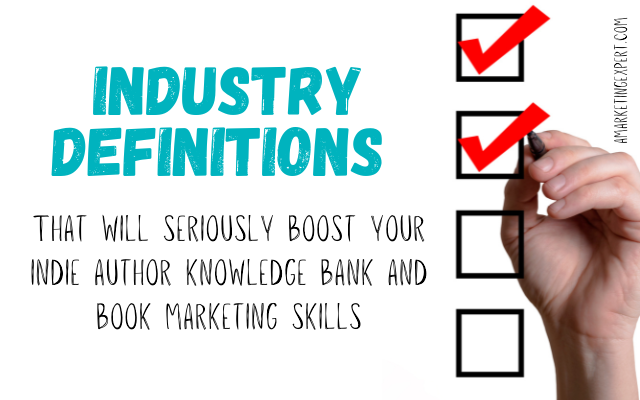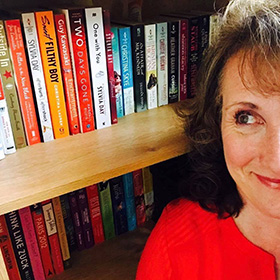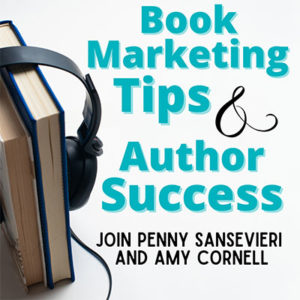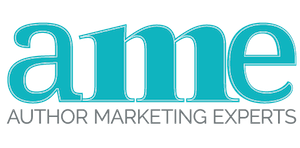Publishing a book can be confusing, and as if that isn’t challenging enough, you’re then expected to design a smart book marketing plan!
Which is why I decided to create this quick guide to common publishing definitions.
My goal was to focus on terms that I often see misused or misunderstood.
And why does it matter so much?
To start, using the wrong terminology could send you down the wrong path when making early publishing decisions.
But it can also really get in the way of a good book marketing plan, and finding a team to assist you in all the ways you’re really looking for publicity help.
I can tell you from experience it’s much more challenging to customize a book marketing plan for an author who thinks they’re communicating their needs, but are actually telling me something entirely different!
So run through all of these, some you likely know, some may surprise you because you weren’t entirely on the right track, and some may be new.
And even if you’re a seasoned author it never hurts to do a quick refresh, right?
Amazon Author Central: A free tool Amazon gives to all their published authors. You can upload your picture, bio, link your blog and add video to help enhance the reader experience. Keeping your Author Central up to date is an ongoing task and you should plan to include it in your long-term book marketing plan.
ARC (Advanced Review Copy): These are early bound copies of your book used to get advanced reviews, blurbs, endorsements, and media. ARC copies can be tape bound, or in some cases even spiral bound copies of your nearly completed book. Books should be laid out but could be 80% ready to go – meaning they need one more editorial pass and may or may not have a final cover. These are also referred to as Galleys.
Back matter: Pages included at the back of the book such as: afterword, epilogue, appendix, index, bibliography.
Backlist: A list of books that are older, not published in the current year but books that are still in print. Authors with a book series tend to fall into this category.
Beta readers: Early readers of your book before it’s published to give feedback, input, or ideas on what could enhance your story or content, or what should be removed. Beta readers can be existing fans or your Street Team (see: Street Team for more information on this), but are another key element to your book marketing plan.
BISAC codes: BISAC stands for – Book Industry Study Group. These codes are used by all major supply chains to categorize your book properly. When you upload your book to Amazon, or wherever, they’ll always ask you for your categories, these are set forth by the Book Industry Study Group and all categories are updated annually.
Book blogger: A blogger who focuses exclusively on books – reviewing them, spotlighting them, or doing author interviews. Often book bloggers will review across a few genres though some are genre specific.
Bookstagrammer: An influencer who reviews, features or spotlights books exclusively on Instagram. Some Bookstagrammers are also book bloggers and vice versa.
Blurb: Short promotional text (often referred to as an endorsement) of your book. Blurbs can be added to the book cover (though often aren’t because of timing issues). But they should always be added to your Amazon retail page.
Content editing: A heavier edit, often done before the copyedit. A good content editor should fix things like story flow, sentence structure, and overall book structure.
Copyediting (also called proof reading): Reading and correction of a book’s typographical errors. Looking at punctuation, for example.
Elevator pitch: A short 1-2 sentence high concept pitch for your book. This is a key element to your book marketing plan and brand messaging for your book and we even dedicated a recent podcast episode to creating elevator pitches. You can find the link to our podcast in the Resources and Free Downloads section at the end of this piece.
Foreword: This appears at the front of any book and is typically a short introduction by another established author or expert on the topic of the book.
Foreign rights: Print or translation reprint rights sold in other countries or territories.
Front matter: Anything that’s included in the front pages of the book, such as: dedication, copyright, foreword, about the author, and table of contents.
Galley (also referred to as Bound Galleys): See ARC’s
Genre: A classification for any book. Most books sit in dual genres, but you have to be very strategic about choosing these, don’t just guess.
Hybrid publisher: A hybrid publisher or press is a company that helps to facilitate the publication of the books they acquire. They are not traditional publishers and often don’t offer any kind of enhanced distribution of the titles they accept (meaning distribution into retailers such as Barnes and Noble, Walmart, Target, etc.)
Independent press: Small but mighty, independent Presses are not part of larger publishing houses and often have more time and attention to invest in their authors. A few top Independent Presses in the US are: Graywolf Press, Coffee House Press, Melville House, Milkweed Editions, and Soho Press.
Influencer: Someone who has a large and engaged audience who is ready to buy anything (or almost anything) the influencer recommends! Getting the attention of influencers early on in your book’s shelf life is something we always recommend for an author’s book marketing plan.
ISBN (and ISBN-13): International Standard Book Number is a number assigned to any book that tells a retailer who published the book, the format in which it’s been published as well as the languages it has been published in.
KDP (Kindle Direct Publishing): Of all of the publishing definitions, this one tends to be the most confusing, which is why I separated out KDP from KDP Select (see below). The KDP portal is Amazon’s self-publishing system that allows you to publish your eBook and print book on their platform.
KDP Select: Kindle’s publishing arm also gives you the opportunity to publish your eBook exclusively to Amazon, and gives you some bonus promo items to do so. You can enroll your book for 90-days or you can have your book automatically enrolled so every 90-days it renews in the system. Amazon gives you freebie days to promote your book (5 free days per 90-day enrollment) and other promotional pieces to whet the appetite for authors to include their books. Not all books do well in KDP Select though, so make sure you know whether your genre is right for this exclusive market – remember if your eBook is in KDP Select your electronic book is exclusive to Amazon (though your print book can live in a variety of places like Barnet & Noble, etc.)
NA (New Adult): Books written for readers between the ages of 18 and 30.
National media: Also called “legacy media” national media is typically in broadcast and print. National media are outlets that have national audiences such as: NPR, The Today Show, Good Housekeeping Magazine, FOX News, Real Simple Magazine, The New York Times, and CNN. Adding national media to your book marketing plan sounds appealing, but you often only get one shot with these big opportunities so be sure you’re ready – or consult with a marketing team.
Metadata: The specific data about your book. At its most basic, metadata is the title of your book, publisher, and author name. but if that’s all you’re using in your metadata you’re really missing a lot of opportunities. Keywords should be a big part of your metadata both during your book upload and on your Amazon retail page.
MG (Middle Grade): A classification of books written for readers ages 8-12.
Online media: A media outlet that lives and publishes online, though this can also be the online arm for many news outlets, legacy media, print media and radio.
POD/Print-on-Demand: This form of printing was developed over twenty years ago, essentially its ability to print books as they are needed, exploded the indie publishing industry to what it is today. Previously, books had to be printed in lots of 500 minimum, but most authors printed lots of 2,000 and more. POD essentially removed the need to print big lots of books, but the printing costs for POD are higher since you aren’t printing in large quantities. Most indie publishers like IngramSpark, Lulu, Amazon’s KDP and Author House all use this method of book printing.
Post-publication reviews: Reviews that are sought after your book’s publication date.
Pre-publication reviews: Reviews that are sought prior to your book’s publication date, often 3-4 months in advance. Incorporating this kind of pitching into your book marketing plan takes serious planning, and you’ll need ARCs.
Super Fan: This is someone often on your newsletter list who loves everything you write, may or may not review all of your books but often pops up on your social media and also consistently reads your newsletter.
Street Team: This is a very active fan, a reader who reviews all your books, may also help you promote your books by sharing new releases on their social media, to their book groups, or even help spread the word to their local markets.
TOC: Table of contents.
Trade media: Media that is specific to a trade, profession, or hobby. This can be both online media, broadcast or print media (such as crafting magazines, sporting magazines, legal industry publications, etc.).
YA (Young Adult): Books written for readers between the ages of 12-18. What’s interesting is that YA is actually really popular with adult readers as well, typically because the world building is so vivid and many authors who write YA focus on creating series.
Keep this list of publishing definitions handy because it’ll help not just in your publishing journey, but it will also help when developing your book marketing plan as well!
Resources and Free Downloads
Check out all the episodes of our book promotion podcast anywhere you listen to podcasts!
Be sure to sign up for our newsletter on the right hand side of our blog homepage. If you haven’t opened a recent one your registration may have lapsed!
Definitely follow us on Instagram.
Understand more about what makes an exceptional Amazon retail page.





Thank you for doing this. I started a list a while ago, but yours is much further along. I’d love for someone in the know (you perhaps) to provide definitions for all of the genre terms. For example, I was two years into my author career before I knew what “cozy” was. There are probably hundreds of genre terms that evade new authors.
Steaphan we absolutely agree, it can be a lot to keep up with! That’s why we always encourage our clients to be superfans of their genre. Read books by authors that are hitting the bestseller list. Participate in Goodreads groups, read reviews across multiple platforms. Being a reader, and a fan, is some of the best market research an author can do.